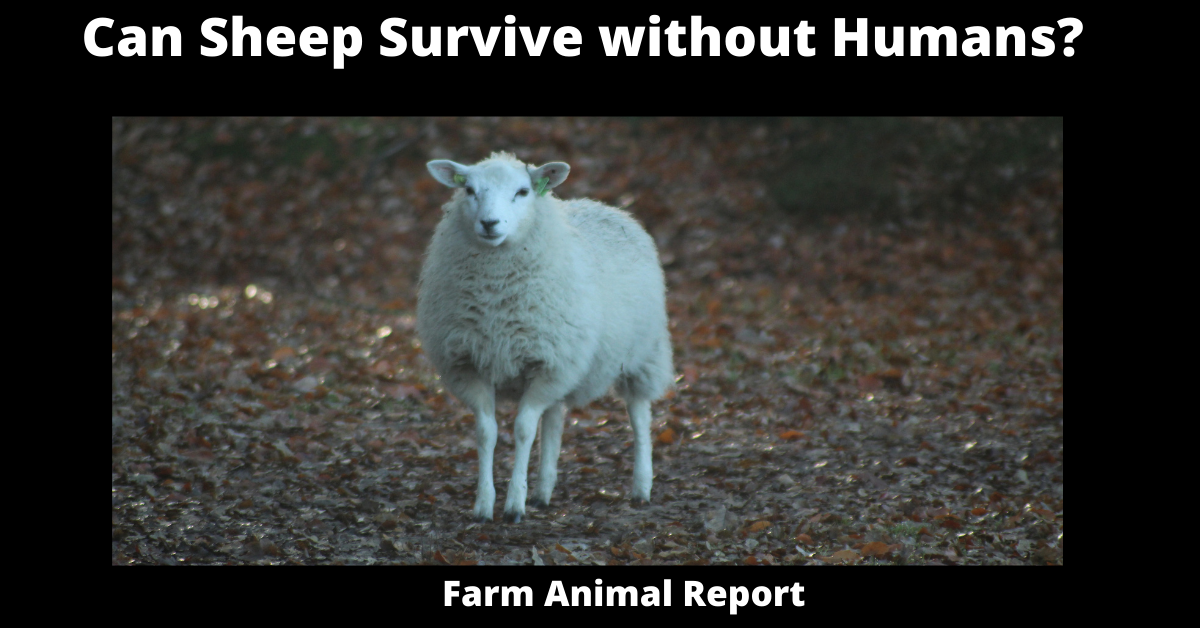As a general rule domestic sheep have been bred for wool, meat, and milk production. Domestic sheep would have a challenging time without people. Wild Sheep – Bighorn – Dall Sheep – Stone Sheep Wild sheep can only exist in surroundings that they can defend, and topography makes it difficult for predators to approach them. There are four primary varieties of wild sheep. They have horns and hooves that they can use to defend themselves.
How did Sheep survive Before Humans?
Can sheep survive without humans? Sheep are a communal species that congregate in herds for protection and avoid being caught off guard while eating or sleeping. Although it is conceivable for a lone sheep to survive without human intervention, it is uncommon for a sheep to be alone. How did Sheep survive Before Humans
If the domestic sheep is alone, it will survive, but not very well. The primary issue is that sheep can’t shed their wool on their own, which puts them at risk of overheating in the summer, and the wool will eventually grow to the point that the poor sheep can’t see or walk.
In the case of wild sheep, the answer is yes; they can always thrive and live alone without human interference.
Sheep began their lives like wild animals before being domesticated by humans. Wild sheep can only exist in surroundings that they can defend, and topography makes it difficult for predators to approach them. There are four primary varieties of wild sheep. They have horns and hooves that they can use to defend themselves.
Here are the Primary Reasons why Sheep can and do Thrive in the Wild
Terrain
Sheep are good climbers, thanks to their four strong hooves and low center of gravity. As a result, wild sheep and some domesticated sheep survive by navigating challenging and rocky terrain that even the most agile cat species cannot readily climb or attack.
Defenses
Sheep, especially wild sheep, have a lot of protection. Many have horns that, when charged head-on, may deliver a devastating blow that can break animal bones.
When you consider their hooves, which can be used to kick any would-be predator, they don’t appear to be the meek and fearful creatures you might expect. They can also run at a speed of roughly 20 mph, so they have that option as well.
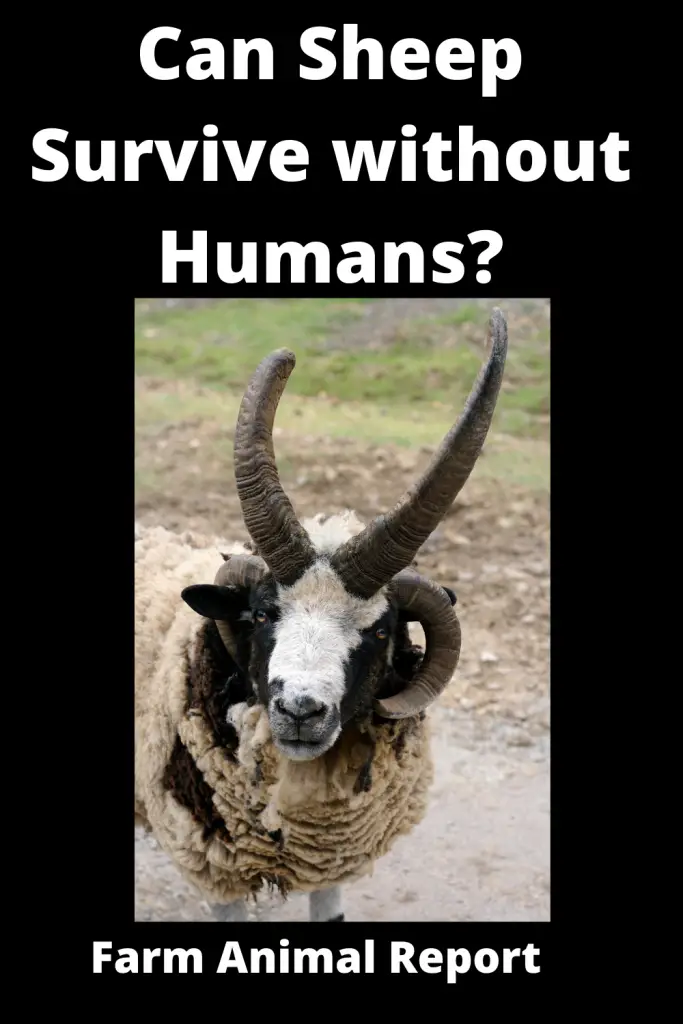
Seasonal Survival is Important
Sheep graze happily on mountaintops in the spring and summer; they will molt naturally and lose their winter fur by July in the wild. Sheep acquire their famed coat in the late fall, a thick woolen covering that will see them through the winter and harsh weather.
They’ll also have gained weight from grazing in the spring and summer, allowing them to survive on the tiny amounts of flora found between rocks and under thin snow when food becomes scarce.
Some sheep have evolved to breathe in thin air, allowing them to climb higher than many other species and probably most predators while yet surviving contentedly.
Survival and Habitat of Wild Sheep
It is critical for wild sheep to be aware of their region to survive in the wild, and they are well adapted to this.
Sheep have been living in the wild for a long time, long before people arrived, and it’s clear that these wild sheep have thrived in a variety of environments, from alpine regions to desert climes and from wetlands to hillsides.
Wild Sheep Anatomy
The presence of horns is a common feature of wild sheep. Aside from the horns’ secondary use as a means of defense against predators. The primary purpose of horns in wild sheep is to establish dominance within the herd.
4 Species of Wild Sheep
There are wild sheep as well as cultivated sheep in the world. There are over 1,000 types of domestic sheep; however, there are only four identified species of wild sheep.
- Dall sheep (Ovis Dalli)
- Bighorn sheep (Ovis canadensis)
- Stone sheep (Ovis dallei stonei)
- Desert bighorn sheep (Ovis canadensis nelson)
How did Sheep Survive before Humans?
They primarily survive by living in groups and defending themselves with their large horns (because they are wild species). Sheep also lived before people began harvesting sheep wool by simply dropping it and developing a new coat.
Remember that current domesticated sheep are a far cry from their wild cousins and progenitors, having been intentionally selected to overproduce their fleece and lose their yearly shed over thousands of generations.
How do Wild Sheep Protect Themselves?
Wild sheep herds defend themselves from predators by facing diverse directions and keeping an eye on their surroundings. They also have large, powerful horns to protect themselves with.
Sheep, on the other hand, is a prey animal in general. When presented with a threat, their natural reaction is to escape rather than fight. To escape being eaten, they employ avoidance and quick flight strategies. Because their innate instincts are more excellent, some primitive sheep breeds may dodge predators more effectively.
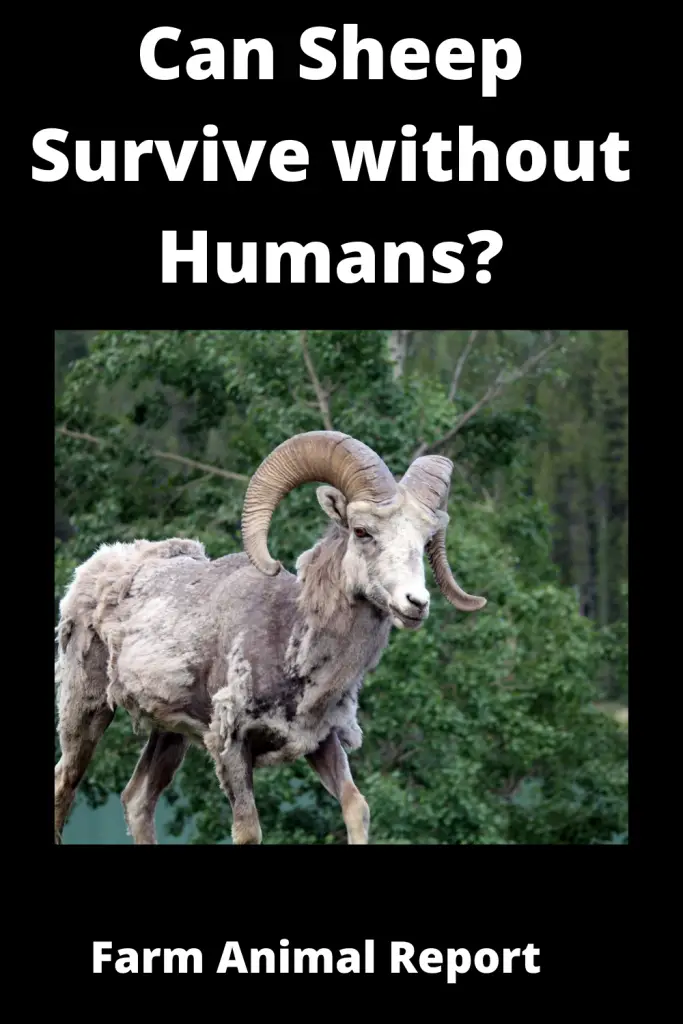
What do Wild Sheep Eat?
Small ruminants, such as wild sheep and goats, assist them in extracting the maximum amount of nutrients possible from plant-based resources.
Sheep eat leaves, grasses, and other non-woody vegetation. They have a complicated stomach that aids in food regurgitation, allowing them to adapt to harsh environments. The average weight of a wild sheep’s supper is roughly 3 pounds.
Wild sheep in a desert climate consume more water-containing vegetation, such as cacti, and can go three days without eating.
Where did Native Sheep Live?
Sheep were domesticated from wild sheep at least 5000 BCE, and their remains have been discovered at several early human habitation sites throughout the Middle East, Europe, and Central Asia. Domesticated sheep are bred for the fleece (wool), milk, and meat they produce.
Mutton is the meat of mature sheep, while the lamb is the meat of immature animals. In the early twenty-first century, the world’s sheep population was believed to reach over one billion. Australia, New Zealand, China, India, the United States, South Africa, Argentina, and Turkey are the most significant national producers. The largest producers are countries with vast amounts of grassland.
Do Wild Sheep live in Flocks?
Like many other ungulates, wild sheep are typically found in herds, hence the term “flock of sheep.” Where the adage “safety in numbers” has never been more true.
Herd travel provides several advantages. First, it implies many eyes and ears on the lookout for prey and ready to alert the herd/flock if they come across something. Second, as a result, the young lambs are better safeguarded by a more significant number of adults.
It also means that a deft defensive wall may be constructed against any invading predator force, serving as a significant deterrent. Finally, it implies that if the worst happens and a predator captures one, the flock as a whole will be unharmed.
How did our Current Domestic Sheep Develop?
Domestication of the wild Mouflon in ancient Mesopotamia dates back to between 11000 and 9000 BCE, and the domestication of domestic sheep dates back to between 11000 and 9000 BCE. Sheep were one of the first creatures that humans domesticated.
Meat, milk, and skins were the main reasons for raising these sheep. Around 6000 BCE, woolly sheep were developed. They were then traded to Africa and Europe, where they were sold.
It’s difficult to trace the exact line of descent between domestic sheep and their wild progenitors. They do, however, evolve as a result of selection. The most widely held belief is that Ovis aries is a descendant of the Asiatic Mouflon (Ovis Orientalis). Crossbreeding with wild European mouflons created a few sheep breeds, such as the Castlemilk Moorit from Scotland.
See Our Extensive Guide – 16 Ways to Make Money Sheep Farming
Confirmation, quantity, and quality of fleece, color, size, milk production, and other features distinguish domestic sheep from their wild ancestors and among themselves. The majority of domesticated sheep breeds generate wool, whereas a handful only generates hair, and wild sheep produce wool and fur.
Hundreds of different sheep breeds have been made to fit environmental circumstances dictated by latitudes and altitudes and human clothing and food requirements.
Fine-wool sheep are typically bred solely for wool production, whereas breeds with medium or long wool, or only hair, are usually raised for meat production. However, several crossbreeds have been established that provide high-quality wool and meat. Except in small places, most of the world’s more than 200 sheep breeds are of minimal interest.
Can you Free Range Sheep Today?
Farmers can now let their livestock roam freely. There are various advantages to having free-range sheep that you can harvest and enjoy. Sheep who are allowed to roam freely are generally happier, produce better goods, are healthier, and save money. Here are some of the bonus points of having free-range sheep.
1. Sheep live Longer and are Happier
In most cases, free-ranging sheep farming allows your sheep to range freely in your pasture. Even if they are allowed to go about freely, you must still give them enough space and grass to eat.
Free-range sheep are generally healthier and happier, as they are able to travel freely with their herd, socialize with all creatures in their environment, and get enough fresh air. Sheep that are allowed to roam freely are healthier and less prone to various diseases and viruses. They are also, on the whole, happier, which is a plus.
2. It has the Potential to Save Money, resulting in a significant Investment.
Because free-range sheep graze for their own food, you won’t have to spend as much money on sheep feed. This will make free-range sheep a better investment as well as a potential money saver.
Sheep that are allowed to roam freely are a good investment and a good investment for sheep farming. However, you have to ensure that you have enough space and grass to ensure that your sheep do not run out of grass to eat during their free-range grazing.
3. Offers Superior Items
It may be because of happier sheep and healthier free-range sheep that sheep create such superior products. In addition, sheep wool grows faster and tends to be of higher quality.
If the quality of your products is a problem, you might want to try the free-range sheep farming method.
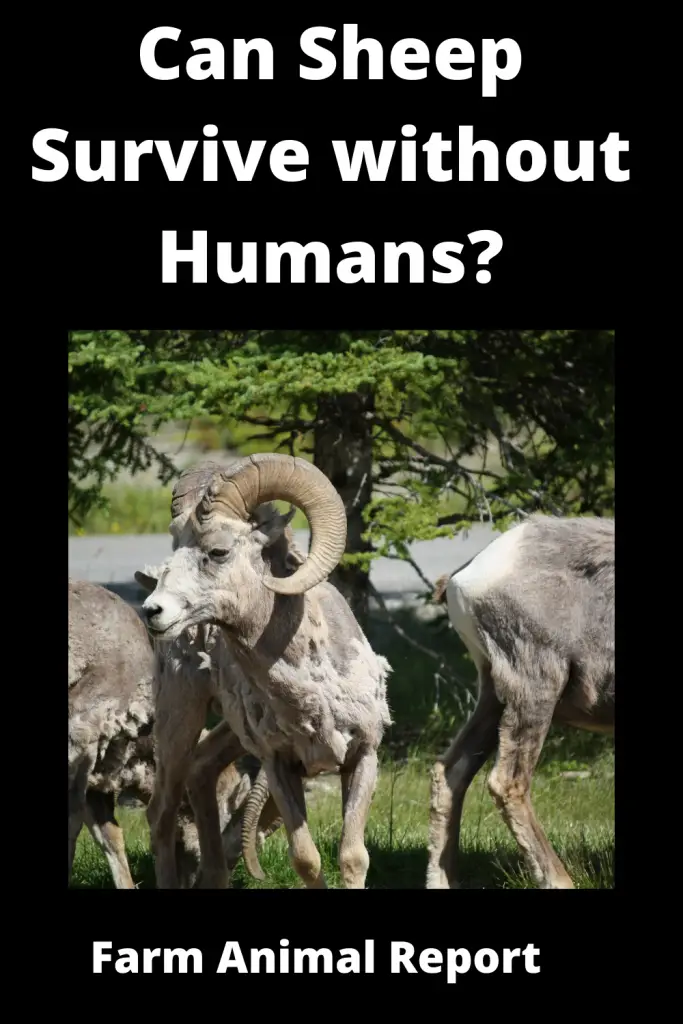
What Happens if Sheep are Left Alone?
Sheep should not be left alone, but if fed, hydrated, and protected correctly, they should be okay for most of the day. However, you should be aware of any potential hazards that may arise while you are away. Electric fences and light or sound alerts are two examples of protective methods.
Other disadvantages of letting sheep alone include the possibility of their escaping, eating your fruit trees, or being attacked by a predator.
How Long can Sheep be Left Alone?
Your sheep can be left alone for around 8 hours if they have food, drink, and shelter. However, leaving them alone has some risks, such as them escaping or a predator breaking in. Therefore, sheep should be examined twice a day, once in the morning and once at night, and accompanied by a livestock guardian.
While domestic sheep can be left alone if you can give them what they want in a single day, you can take specific proactive actions to lessen the likelihood that they may cause difficulties on the farm while you are away.
Let’s start with a more Extensive List of issues that Sheep can face if they’re left alone.
- Freezing buckets of water
- You’re out of food
- Getting away
- Eating from your garden or orchard
- Being preyed upon by a predator
- Getting sick
- Getting tangled up in a fence or other structure
- Giving birth at a young age
Although it’s nearly hard to avoid any of these problems, there are a few things you can do to assist you to feel more at ease when you’re away from the farm.
Here’s a list of Suggestions to Assist you to keep your Sheep safe and sound:
- They should improve their fences (electric vs. woven wire)
- Hire a livestock guardian for them.
- While you’re gone, lock them up in the barn.
- Install water heaters in buckets.
- Connect a remote camera to your phone and set it up.
- Could you provide them with additional food?
- Look for any gaps in the fencing or signs of predators around the perimeter.
- Make sure their pasture is free of dangerous plants.
While this isn’t a complete list, I hope it provides you with a few thoughts to consider before leaving your sheep alone for an extended period of time.
In general, as long as you check on your sheep at least once or twice a day and meet their basic needs, they should be okay.
Can You Keep a Single Sheep?
Unless one is orphaned, you’re considering keeping one as a pet, or you have a small backyard, you’re unlikely to keep a single sheep. Keeping a single sheep, though, has significant drawbacks.
Sheep are herd animals and should always have a companion. Because they rely on other sheep to learn habits and socialize, it’s best to keep at least three sheep together. When a sheep is isolated from its herd, it can become panicked, leading to behavioral or psychological problems in the long run.
Their herd will provide them with a sense of security and aid in their psychological development. However, sheep kept alone or with other livestock that isn’t their own may suffer health problems as a result of the stress.
On the other hand, sheep can sometimes be raised with goats, and though this works in most circumstances, they prefer to be near other sheep. It’s helpful to know how much land you’ll need if you want to keep sheep on your farm. 6-10 sheep per acre is the recommended number of sheep to keep. To offer a decent environment for your sheep, you’ll need at least half an acre with a minimum herd size of three sheep.
How Long Can Sheep Go Without Food?
Hopefully, this will not happen frequently, but sheep may go without food for brief periods of time. This is not the same as if your sheep refuses to eat. For example, if you’re stuck in town because of a blizzard, you’ve run out of food, or it’s spoilt, and you need to go out and get more, you might not be able to feed your sheep straight quickly. Of course, some steps may be taken to help avoid these circumstances from occurring.
Sheep, like most animals, may live for weeks without eating if they are healthy and have a low body fat percentage. Therefore, sheep should not be denied food or water for more than 48 hours during transit. Sheep should, at the very least, have constant access to water.
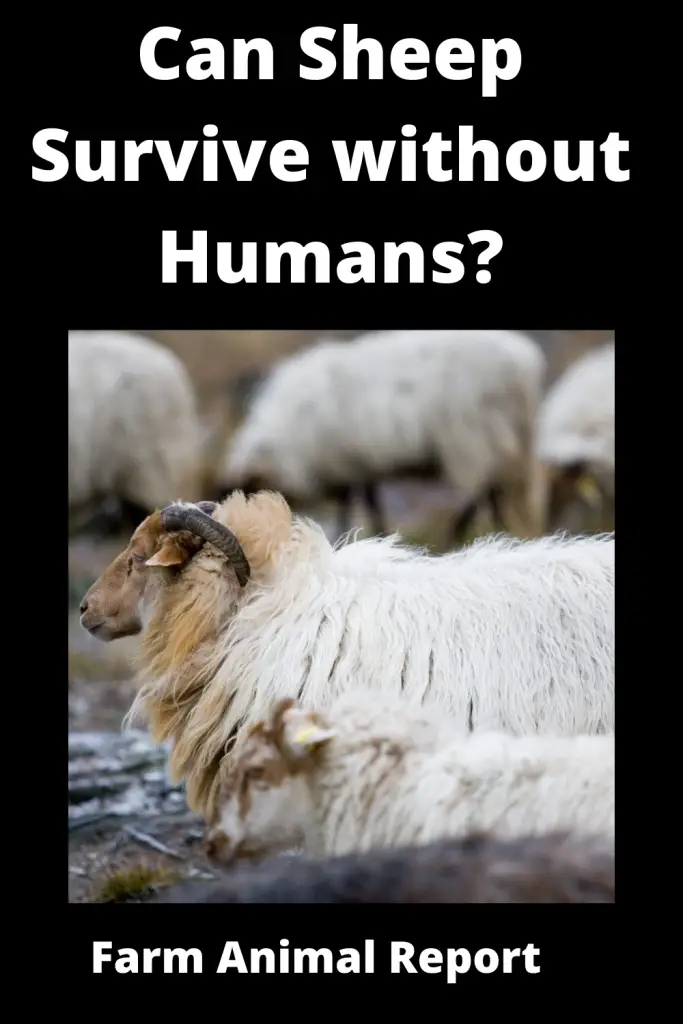
Will a Sheep’s Wool Grow Forever?
It is dependent on the breed and type of sheep. Domesticated sheep provide wool for all purposes due to genetics and selection over time. While wild species like Mouflon don’t produce as much wool as regular sheep, do in the wild, and commonly shed it the same way most other animals do with their surplus hair/fur/etc., or it gets trapped in vegetation, which acts similarly to a brush.
What Happens if Sheep are not Sheared?
Shearing is required for the health and cleanliness of each individual sheep as long as there are sheep.
Sheep, unlike other animals, are unable to shed their skin. Therefore, when a sheep goes too long without being shorn, it develops a variety of difficulties.
Sheep’s capacity to regulate their body temperatures is hampered by abundant wool. As a result, sheep can become overheated and perish as a result of this.
Flies, ticks, maggots, and other pests are attracted to urine, excrement, and other things trapped in the wool. This creates discomfort, and infections and puts the animal’s health in jeopardy.
Physical barriers in their path might paralyze sheep with a lot of wool, making them more vulnerable to predator attacks.
What is the difference between Sheep with Wool and Sheep with Hair?
The ratio of hair to wool fibers is the main distinction between hair sheep and wooled sheep. Both types of fibers are found in every sheep. Sheep with more hair fibers have more hair fibers, while sheep with more wool fibers have more wool fibers.
Shearing is required for wooled sheep. Sheep with hair, do not. Hair sheep’s tails aren’t frequently docked, either. For health and sanitary concerns, most wooled sheep have their tails docked.
What Happens if Sheep Hooves are Not Trimmed
Failure to trim a sheep’s hooves can result in significant health problems, such as foot rot and decreased movement, which can eventually lead to lameness.
The Telltale Signs That It’s Time To Trim
Trimming a sheep’s hooves serves two purposes: to provide an even, comfortable walking surface for them to walk on and to wipe out accumulated dirt and debris that may have gotten lodged in their feet to prevent infections.
The hoof walls are the most critical aspect of a sheep’s foot care. If left unchecked, they will grow past the soft sole of the sheep’s foot and curl over on their toes, causing unpleasant walking conditions and trapping dirt securely between the sole and the hoof wall.
It will also start to grow on the heel, resulting in an uneven walking surface for the sheep. Examine a sheep’s feet if it appears like it is having difficulty or reluctance walking. By that time, you might be much beyond due for a trim!
Health Problems of Wild Sheep
Infectious illnesses, among other things, make wild sheep vulnerable.
- The disturbance caused by humans and industrial activity
- Resources compete with other species, such as grazing livestock and wild animals.
- Feed is of poor quality and is scarce.
- Overcrowding
- Coyotes, wolves, cougars, bears, and eagles are predators.
- Extreme weather
- Parasites and infectious disorders
- Changes in habitat quality and quantity are affecting the health of wild sheep.
- Interactions between livestock.
Final Thoughts
Sheep can live without humans, but they should only be left alone in an emergency. As a result, supplying them with plenty of food and water is a brilliant idea. If you must leave the sheep alone, try strengthening their protection or expanding their feeds. You might also wish to locate someone to look after your sheep while you’re away.
Sheep should not be kept in herds of less than three, and they should always have access to food and water. While maintaining a watch on sheep for the whole of the day can be difficult, consider delegating it to someone who can help, such as a livestock guardian (the great Pyrenees are a popular sheep and livestock guardian).


